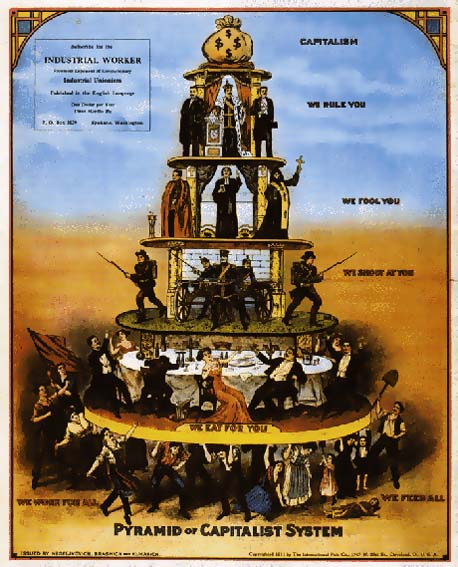Chapter 23 - The Developing Crisis
I submitted an article for publication in the Humboldt Forumon December 15, 1961 when I was editor of Lumberjack News at Eureka, California. The article was printed under the following statement:
"The opinions reflected in the following article are not necessarily those of the Forum staff. Its inclusion represents continued effort on the part of the staff to give equal representation to all views. The Forum welcomes articles in answer to this one and will consider publishing one or more, depending upon their merit."
There are plenty of storm signals flying on the American scene in 1961. First, let us never forget the one cardinal fact of life in any capitalistic system, to wit, Capital MUST make a profit in order to do business. This profit is in the form of manufactured goods, money to reinvest, etc. Over and above what is paid to the worker and salaried help is "surplus value". This surplus is the real villain that is going to gum up the works and soon. Here is one concrete example: I recently visited a small manufacturing plant that employed only two men on a shift. These two men received some $22 per 8 hour shift, thereby making labor cost $44. In that 8 hour shift these men produced goods to be the value of $14,000!
Of course this is not the rate of exploitation of labor by capital, nationally. This national average is about like this: 540 billions of dollars in Gross National Product as against some 90 billions total wages and salaries. Surplus goods must find a market, and surplus capital must find re-investment opportunities. Both of these are "drying up", as our former markets (Germany, Italy, Japan, and England and now arriving at this same surplus stalemate, that is, with exportable surpluses, and with more, and more investment capital.
Coupled with that is the fact of newly emerging nations (former colonies) that are building up their own economies, and which are gravitating more and more towards the Soviet Bloc. Soviet "foreign aid" is now granted in about double the amount of American foreign aid. Here are two good reasons why: first, Soviet aid is on long term, low interest rate of 2% and can be repaid with manufactured products. American aid is at 6% and must be repaid with dollars, Hence the popularity of Soviet aid.
Let's take a short peak at the lumber business. We have all seen the amazing paradox of logs being hauled both north and south for hundreds of miles, passing up scores of sawmills and passing each other on the roads. This is pure waste and duplication of effort. Sawmills are built regardless of the growth potential of the surrounding forest and on a helter skelter basis. Lumber, produced on the West Coast, and in many cases shipped to the East Coast, made into manufactured products, and shipped back to the West Coast! More waste and duplication of effort. In the Soviet Union, logs go to the nearest mill. The mill town in the Soviet Union is also the place where all mill waste is made into paper, chemicals, etc. It is always built according to growth potential of the forest and will last forever.
There is only one solution to this developing crisis and that is Socialism, with a planned economy, the elimination of wars, and the ending of unemployment. How we get it is ANOTHER matter entirely.
![]()
